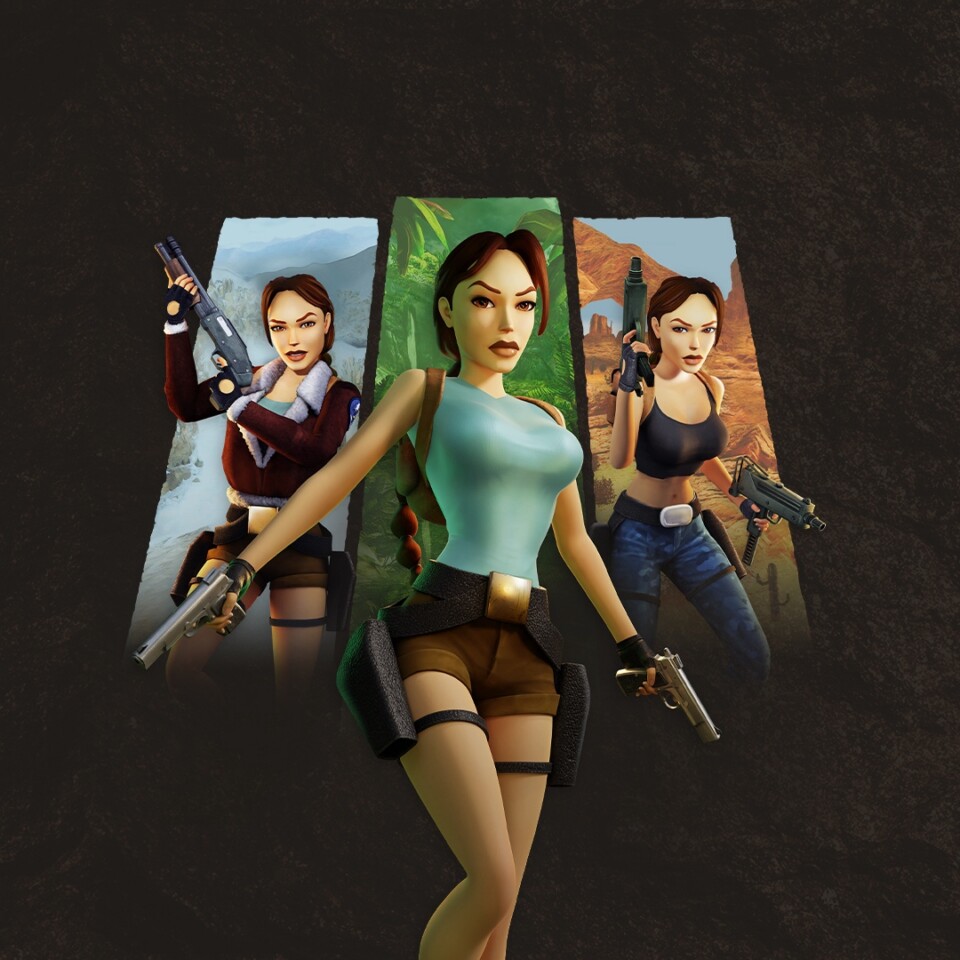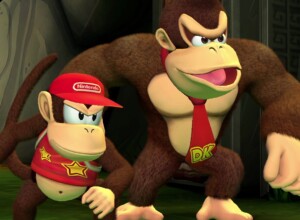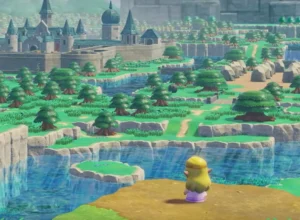Port-and-remaster specialist Aspyr has dusted off another old relic from gaming history, the original Tomb Raider trilogy.
The biggest relief of Tomb Raider I–III Remastered is getting acquainted with Lara Croft. Lara being Lara, the acquaintance is quite literal. “Welcome to my home,” she says, as you bound about Croft Manor in the tutorial. “Sorry about the crates. I’m having some things put into storage, and the delivery people haven’t been yet.” This casual air, as if you had just dropped in for afternoon tea, tells you a lot. One, we are dealing with someone of unreachable stature and wrought-iron manners. And two, she is dealing with us. “I won’t fall off, even if you try to make me,” she says, as we shuffle to the edge of a gap. “Go on, try it.” What better way to introduce a heroine of such perfect poise than to make us wonder who is controlling whom?
It makes a nice change from the Lara of more recent entries, who was in all kinds of trouble – from failing parachutes to snow-caked Siberian bears – and never in control. She was always getting yanked around, by fate as much as by our feckless thumbs, and she bore the cuts and bruises to show for it. God knows why Crystal Dynamics thought it was a good idea to give us Lara’s vulnerable side, to ground her in bad luck and smother her in grime; I’ll take Lady Croft any day, who informs us that she had the ballroom of her mansion converted into her own personal gym. Born into bottomless wealth and capable of felling any challenge, she is no more or less believable than the new Lara; she merely sees fit to enjoy the fantasy of her own life. Listen to the way she describes the turmoil of her first outing, in the sequel, as “that gruelling business last year.” She sounds no more peeved, on the topic of her many brushes with death, than she does with the delivery people.

This re-edition is from Aspyr, which is known for its crisp and cautious updates of choice games – changing little, so as to preserve as much of their charm as possible. It’s a strange and oddly noble brief for a developer, buffing the work of others as though it were old silverware. Recently, the studio has given us Stubbs the Zombie in Rebel Without a Pulse and Star Wars: The Force Unleashed, as if to demonstrate its status as a lightning rod for all genres, ready for any storm in a port.
What we get here are the original three Tomb Raider adventures, made by Core Design, each papered over with a smart new look. Whereas Lara on the PlayStation was a trembling assortment of stylish triangles, here she has been smoothed. The new versions channel the sheen of the old marketing; you would see Lara on TV, in waxy C.G.I., pepping herself up with sips of Lucozade, and you would wonder why the real thing lacked the same fizz. I like the style that Aspyr has gone for: clean and bright, sharp but unshowy. Fire up the first game, head into those caves, and you are greeted with subtle gloom; snow sifts through a broken ceiling; and that wolf pack now bristles with a fresh lick of polygons, though its movements are still roughly rendered. In a lovely touch, sure to satiate purists, you can peel back the makeover with a single press of a button, and there are the ancient bones: blurred and pale, fossils of long-forgotten power.

Aspyr has included a re-wrangled control scheme, which has Lara darting in all directions as you tilt the stick. It’s doubtless a concession to modern sensibilities, but the trouble is that the landscape around Lara – the towns, the tombs, the boxy strips of jungle – was built for tank controls. Core Design measured out its world in squares and straits, to be conquered with careful swivels and tireless progress. The new layout, though less sluggish, has you slewing, all too often, over the lip of a spiked pit, or off the rim of a cliff into the abyss. Go with tradition, I say. It may irk, at first, how slowly Lara turns around, but the precision it affords in planning each leap and grab yields a brisk satisfaction. After ten minutes, you won’t – in the fullest sense – bother looking back.
For the first time on consoles, we also have the expansions: Unfinished Business, The Golden Mask, and The Lost Artefact. This is a turn up. Expansion packs have always become Lara; they speak to her life outside and in between games, her will to wander beyond a brief. Hopefully, Aspyr gets round to Tomb Raider: The Times, a standalone bonus episode, promoted by the London newspaper, whose editor (Peter Stothard, appearing in-game) dispatches Lara to the burial ground of Tutankhamun. Playing that now would be an invaluable peek into another epoch: just as Lara snoops through the famous site, we would lever open the legacy of this series for inspection. The crest of her fame is hard to grasp now. For a woman who didn’t exist to be embraced by the British establishment – to be sent off on assignment by the very newspapers that cautioned parents against the perils of video games – is quite a feat. And it’s that phenomenon, as much the games themselves, to which Aspyr pays homage here.

The last few years, in particular, have not been kind to Lara. To play Shadow of the Tomb Raider and see her, in the midst of a rainforest, smearing mud on her face, the better to blend into her surrounds, was to witness the final glint of Old World glamour being snuffed out. In delivering these spruced versions, Aspyr restores some of that tattered allure. Whether people will be willing and eager to grapple with the old ways, I don’t care to guess, but the rewards for doing so are plentiful. Tomb Raider was always the natural legatee to Prince of Persia, from 1989, both games demanding not that we know their star performers, in any meaningful sense, rather that we learn their movements and gestures down to every frame. Both feel, too, as if we weren’t exactly controlling these characters as steering them toward a defining style.
That, in the end, is what these globe-girdling sprees achieved. Core Design gave us the world, but, more than than, it gave us a singular way to greet it and beat it on new terms. These games tapped into a similar thrill to the early Bond pictures – that of international sightseeing, in rich and grainy print, for less than the price of a plane ticket, with the sleekest of tour guides for company. The best moment of this trilogy comes early in the second game, as Lara alights in Venice. The alleys are prowled by henchmen and sliced by crisp shadows. The façades are baked into biscuity creams and browns, and everything is sunlit and death-haunted. Aspyr is in its element: the window panes have been gilded, the canals scrubbed to a twinkling green, and Lara guns through the place in a speedboat. It’s a vision of deep, restrained elegance from another time, made vibrant again, and sealed in a beautiful tomb.
Game: Tomb Raider I-III Remastered
Platform: Nintendo Switch, PC, PlayStation 4, PlayStation 5, Xbox One, Xbox Series X|S
Developer: Aspyr
Publisher: Aspyr
Release Date: February 13, 2024






